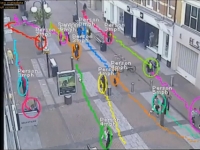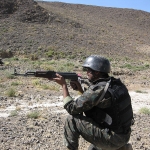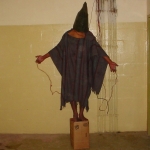TrapWire Leaks Shine Light on New Video Tracking Technologies

TrapWire, a company founded and run by former Central Intelligence Agency (CIA) officers, that offers to track "suspicious" activities from surveillance video, has been spotlighted in a new Wikileaks release.
The system is described on the TrapWire's website as "a unique, predictive software system designed to detect patterns of pre-attack surveillance and logistical planning." The U.S. Department of Homeland Security paid TrapWire $832,000 to deploy Trapwire in Washington DC and Seattle in December 2011, according to federal spending data records.
The information on Trapwire's contracts emerged from one of the five million internal emails from Stratfor, an Austin, Texas-based company that brands itself as a "global intelligence" provider, were recently obtained by Anonymous, the hacker collective, and were released in batches by WikiLeaks, the whistleblowing website, earlier this year.
The Trapwire technology was created at Abraxas corporation, which was founded by Richard "Hollis" Helms, a former CIA agent (but not the former head of the CIA under Nixon). Abraxas spun off Trapwire into another company which still has several senior employees who once worked at the agency. They include Dan Botsch, who worked at the CIA for 11 years as a Russian and Eastern European analyst, Michael Maness, a 20 year CIA veteran who worked in counterterrorism and security operations in the Middle-East, the Balkans and Europe, and Michael K. Chang, a 12 years CIA veteran on counterterrorism operations.
The company appears to have deleted the list of senior employees from its website when the Wikileaks release occurred. But the company still promotes their prior experience: "Our professionals have led successful intelligence operations against terrorist organizations and fought on battlefields across the globe."
The software has been described as a real life version of a system portrayed in Minority Report, a Hollywood blockbuster. "Anyone who takes a photograph at high-risk locations is logged as a suspected terrorist on a vast network of secret spy cameras linked to the U.S. Government, according to leaked emails," writes Rick Dewsbury at the Daily Mail, a tabloid newspaper in the UK.
Mainstream media have reacted more cautiously to the TrapWire leaks. The New York Times commented that the "reports appear to be wildly exaggerated" noting that the Homeland Security had ended trials on the technology last year "because it did not seem promising." The company refused to comment.
While TrapWire is now keeping quiet about its software, a similar UK venture is doing the opposite. Tag and Track, a technology developed by Kingston University researchers, is now being marketed by Ipsotek.
"The notion that you can tag a person and let the system do the tracking is a dream come true for CCTV operators," says Professor Sergio Velastin who is also co-founder of Ipsotek. "The system relies on the identification of a person through features, such as their appearance, which different cameras can then pick up on."
Ipsotek has sold its products to the Australian parliament and to airports in Belfast and Edinburgh. In a Reuters video report, the company demonstrates how it can follow any individual that an operator identifies and tags when analyzing video footage. The Tag and Track software then creates a unique colored trail to show where that individual has traveled.
A similar technology called Footpath, which is manufactured by Path Intelligence in the UK, tracks individuals based on the strength of their cell phone signals. The system was piloted by Forest City, a shopping mall company in the U.S. in Promenade Temecula in Temecula, California, and Short Pump Town Center in Richmond, Virginia last year.
The pilot project was canceled after privacy advocates pointed out that it was most likely illegal and members of Congress started to raise questions.
How accurate are these new video surveillance technologies? "(I)t's extremely difficult, and probably impossible, to distinguish the one-in-a-billion terrorist from innocent people doing ordinary things like taking pictures," Jay Stanley at American Civil Liberties Union told the New York Times. And therein lies the greatest danger.
- 116 Human Rights



